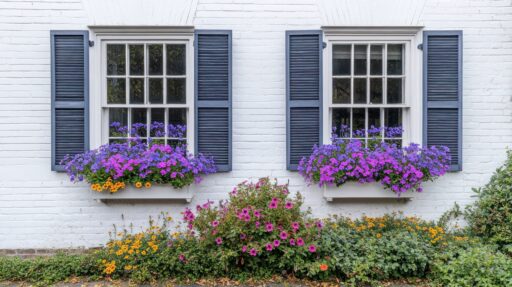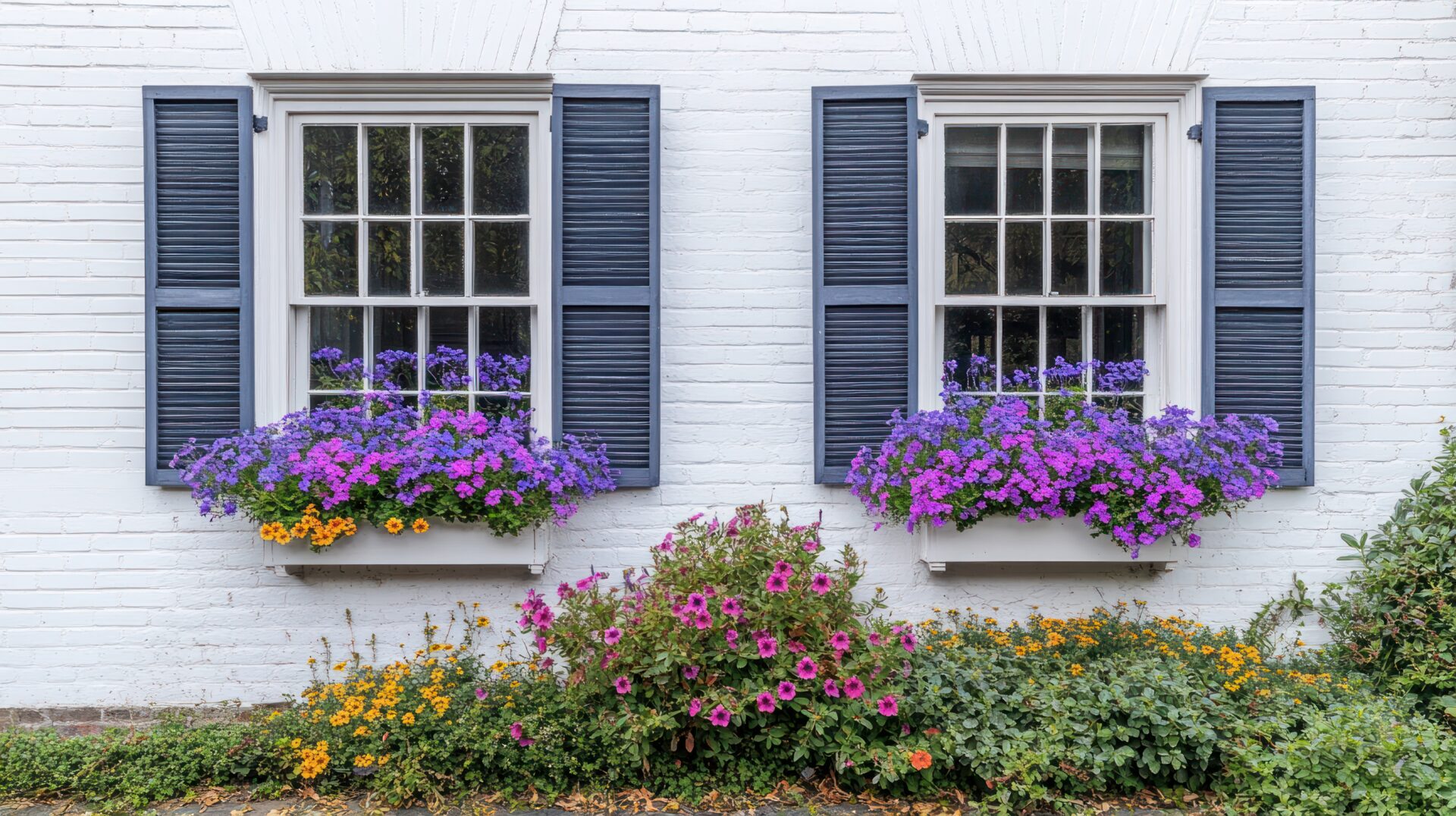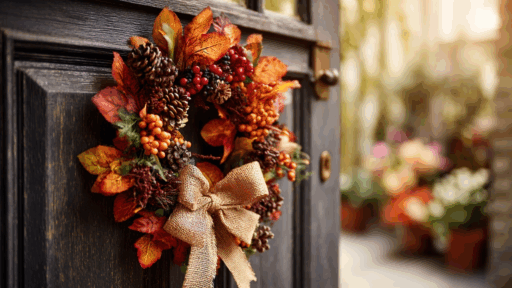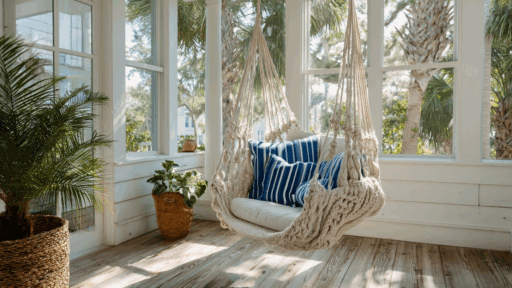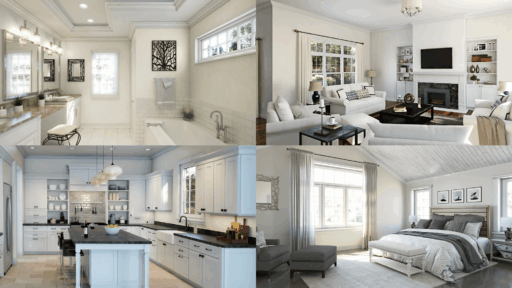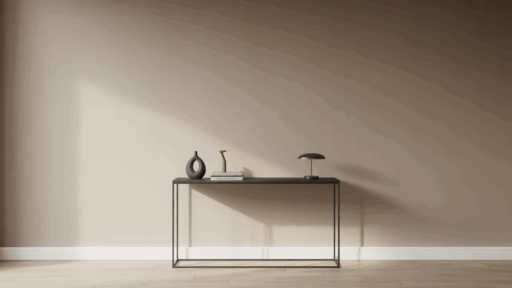Window boxes represent one of gardening’s most delightful opportunities to create living art that changes with the seasons. These elevated gardens offer a unique canvas where creativity meets cultivation, transforming ordinary windows into vibrant focal points that capture the essence of each season.
Whether you’re working with a modest apartment balcony or an expansive country home, mastering the art of seasonal window box design can dramatically enhance your outdoor spaces while providing endless satisfaction as you watch your miniature landscapes evolve throughout the year.
1. Spring Awakening: Fresh Beginnings in Miniature
Spring window boxes should embody renewal and gentle awakening after winter’s dormancy. The key lies in selecting plants that can handle cool temperatures while providing immediate visual impact.
Primroses serve as exceptional foundation plants, offering jewel-toned blooms in purples, yellows, and whites that seem to glow against the fresh green foliage. Complement these with delicate pansies, whose cheerful faces add personality and charm to any arrangement.
For textural interest, incorporate emerging bulbs like small daffodils or grape hyacinths, which provide height variation and seasonal authenticity. Meanwhile, cool-season herbs such as thyme and oregano not only contribute silvery-green foliage but release delightful fragrances when brushed by spring breezes.
The secret to successful spring flower boxes lies in understanding that this season demands patience—allow plants space to grow and fill out naturally rather than overcrowding for immediate fullness.
Creating these beautiful spring displays requires quality containers that can withstand changing weather conditions and provide proper drainage for healthy plant growth. When sourcing them, consider exploring online resources like www.flowerwindowboxes.com to locate trusted suppliers that offer durable, well-designed options.
2. Summer Spectacular: Bold Colors and Luxuriant Growth
Summer window boxes call for drama and abundance, reflecting the season’s generous energy. This is when you can embrace bold color combinations and create truly spectacular displays that command attention from across the street.
Geraniums remain the undisputed stars of summer containers, offering continuous blooms in vibrant reds, corals, and whites while tolerating heat and occasional drought.
Trailing elements become crucial during summer months, as they create the lush, overflowing appearance that defines successful warm-season displays. Calibrachoa, often called million bells, provides tiny petunia-like flowers in an incredible range of colors while cascading gracefully over box edges. Combine these with upright elements like salvia or celosia for structure, then weave in sweet potato vines for their dramatic foliage in chartreuse or deep purple.
The challenge of summer boxes lies in maintaining consistent moisture during hot periods while ensuring proper drainage to prevent root rot. Consider incorporating water-retaining crystals into your potting mix and position boxes where they receive morning sun but some afternoon protection in extremely hot climates. For those seeking convenience, self-watering designs can significantly reduce maintenance while ensuring plants receive consistent moisture throughout the season.
3. Autumn Elegance: Warmth and Texture in Transition
Fall window boxes offer perhaps the most sophisticated design opportunities, allowing you to work with nature’s own color palette of golds, oranges, deep reds, and rich purples. This season calls for arrangements that complement rather than compete with the changing landscape around them, creating stunning seasonal color that harmonizes with autumn’s natural beauty.
Chrysanthemums provide the backbone of autumn displays, available in countless varieties from button mums to large decorative blooms.
Ornamental kale and cabbage contribute incredible texture and color depth, their ruffled leaves displaying stunning combinations of cream, pink, purple, and green that intensify as temperatures cool. These unusual additions create focal points that spark conversation while providing structure throughout the season. Complement these statement plants with trailing elements like ivy or small-leafed vinca that maintain their appeal even as temperatures drop.
The artistry of autumn boxes extends beyond flowers to include seasonal elements like small pumpkins, gourds, or carefully selected branches that echo the natural world’s preparation for winter. This creates displays that feel authentically connected to their environment.
4. Winter Wonder: Structure and Evergreen Beauty
Winter window boxes require a complete shift in thinking, moving away from ephemeral blooms toward permanent structure and subtle seasonal beauty.
Evergreen plants become the foundation of cold-season success, providing reliable color and form throughout the dormant months. Small conifers like dwarf Alberta spruce or compact junipers offer vertical interest while maintaining their appearance regardless of weather conditions.
Incorporate plants with interesting winter berries, such as winterberry holly or beauty berry, which provide color points that seem almost magical against snow or gray winter skies. These berry-producing plants also attract birds, adding movement and life to otherwise static winter landscapes. Ornamental grasses contribute texture and movement, their seed heads catching light and creating visual interest even after frost has ended the growing season.
Less is often more during this season. Focus on creating arrangements with strong architectural elements that look intentional rather than attempting to replicate the abundance of growing seasons. Consider container size carefully during winter months, as smaller window box planters may freeze more quickly than larger ones, potentially damaging plant roots.
Evergreen Elements for Continuity
Creating truly successful seasonal window boxes often requires incorporating plants that provide structure throughout the year while allowing for seasonal accent changes. Small evergreen shrubs like boxwood or compact hollies serve as living architecture, maintaining their form and color regardless of season while providing a backdrop for changing seasonal elements.
These permanent plantings can be enhanced each season with temporary additions—spring bulbs, summer annuals, autumn decorative elements, or winter berries—without requiring complete replanting. This approach not only saves time and money but creates a sense of continuity that makes your home’s exterior feel thoughtfully designed rather than seasonally chaotic.
Whether you’re working with a simple window box or more elaborate installations requiring sturdy mounting brackets and metal rails for support, establishing these evergreen foundations creates a framework for year-round success.
Conclusion
The journey of seasonal window box design teaches patience, observation, and appreciation for nature’s constant changes. Each season brings new opportunities to experiment with plant combinations, color schemes, and design approaches, ensuring that your window boxes never become routine or boring. With thoughtful planning and creative vision, these elevated gardens become living calendars that mark time’s passage while bringing joy to both gardeners and passersby throughout the year.

